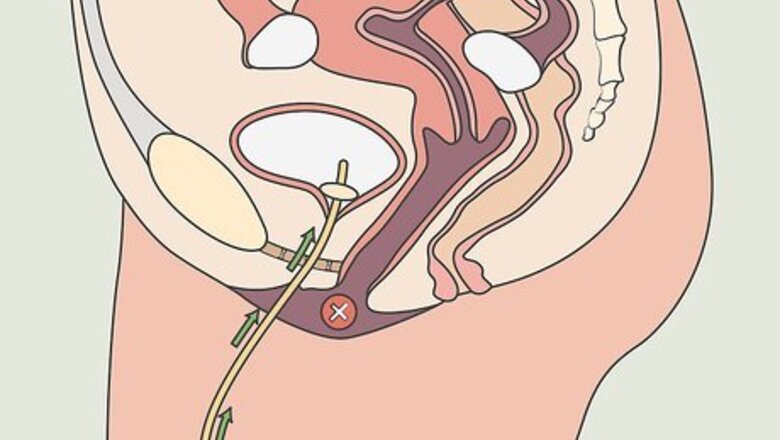
views
Troubleshooting for Common Problems
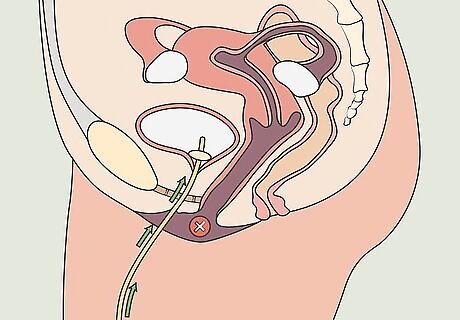
See if the catheter’s in your urethra and not your vagina (women). The urethra and vaginal canal are next to each other, so it is possible to insert a catheter into the vaginal canal instead of the urethra. If you’re female, look to see where you inserted the catheter using a handheld mirror. If the catheter is in your vagina, you’ll need to remove it and start over with a new catheter. Do not reinsert the same catheter that was in your vagina as this will spread bacteria from your vagina to your urethra and this could lead to an infection.
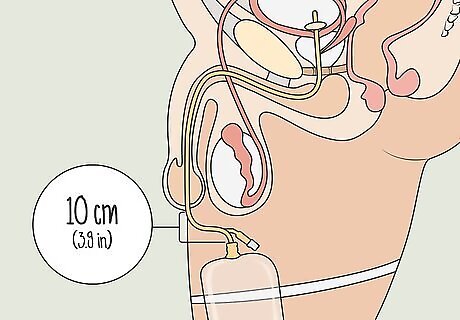
Determine if the catheter has 10 cm (3.9 in) visible if you’re male. This is the correct amount of the catheter that should still be visible if you have inserted it properly into your penis. If there’s more or less than this amount visible, adjust the catheter by inserting it in further or pulling it out by 1–2 cm (0.39–0.79 in) and see if any urine drains out.Warning: Be careful not to pull out the catheter! Only tug it down gently if it appears to be too far into your urethra. If you get it to the ideal positon and there’s still no urine, try another strategy.
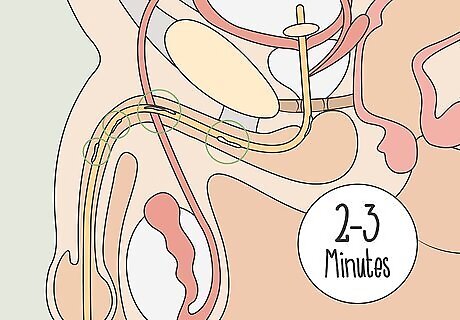
Wait for 2 to 3 minutes after inserting the catheter for the gel to dissolve. Any lubricating gel you use to make inserting the catheter easier can block the drainage holes in the catheter. However, catheter lubricating gel is water-based, so it will dissolve once urine begins to flow. Try checking the catheter again in 3 minutes if you have just inserted it. If there’s still no urine, try another option to get the urine flowing.
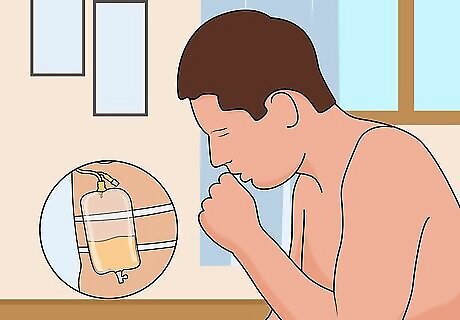
Cough to start the flow of urine. If no urine has emptied into the drainage bag within 3 to 5 minutes after inserting it, try coughing a few times. This will often start the flow of urine. Check to see if any urine flows into the bag when you do this. You don’t need to cough hard. Just cough a few times as if you’re clearing your throat. If there’s still not any urine in the bag, keep looking for other possible causes.

Check for kinks in the catheter or drainage bag tubing. If the drainage bag tubing or catheter is twisted, kinked, or being pressed against your body with too much pressure, such as under clothing or a leg strap, then the urine will not flow freely. Trace the tubing from where it exists your urethra to where it ends or meets up with the drainage bag and undo any kinks that you find. Take the tubing out from under any clothing or straps that may be pressing on it as well. If you usually use a leg strap to keep your catheter secured, check it regularly to ensure that the tubing is not blocked. If the urine is still not flowing after checking the tubing, try another option.
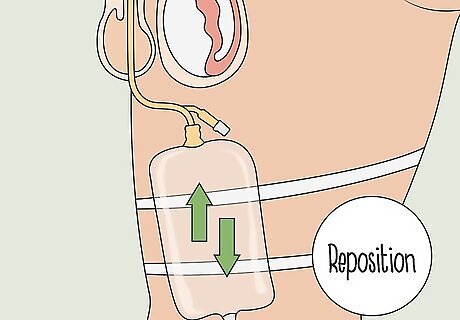
Raise and then lower the drainage bag below the level of your bladder. Lift the drainage bag up above the level of the bladder and hold it there for 20 to 30 seconds. Then, lower the drainage bag below the level of the bladder again. This simple re-positioning technique may help to get urine flowing into the bag again. Check the bag in 3-5 minutes to see if there is any urine draining into the bag. Try to keep the bag in the same position at all times. If you need to move or change positions, make sure to place the bag below the level of your bladder. If this doesn’t unblock the catheter, try the next option.
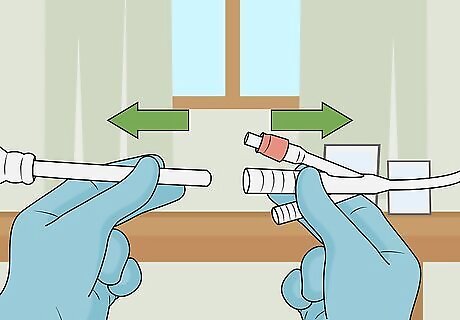
Disconnect the tubing from the catheter as a last attempt. Place a collection cup or bedpan under the end of the catheter before you do this. Then, remove the collection bag from the end of the catheter and see if any urine drains out. It’s possible for the bag to create a vacuum and prevent the urine from flowing. If this does not work, call your doctor’s office to be seen right away or visit the emergency department of your nearest hospital for assistance. If you cannot feel your bladder or if your bladder is full and you’re uncomfortable, go to the emergency department of your nearest hospital instead of calling your doctor.
Seeking Medical Assistance

Watch for signs of a problem and seek immediate medical assistance. There are several things to watch for that could indicate a problem with your catheter. Seek immediate medical attention if you have any of the following issues: Your bladder is full and you’re uncomfortable The catheter is leaking urine You’re having abdominal cramps or spasms There is blood in your urine You have symptoms of a urinary tract infection, such as pain, a fever, and chills Your catheter comes out and you can’t reinsert it
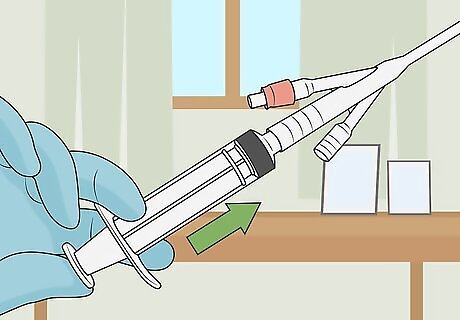
Get the catheter flushed by a doctor or nurse if your urine is cloudy. If you notice that your urine looks cloudy or has debris in it, this may be what’s blocking your catheter. Having the catheter flushed with normal saline by a trained doctor or nurse can help to clean out the tubing so the catheter will work better. You may also need to be checked for bladder stones if the catheter frequently gets blocked. Make sure to tell your doctor about any other symptoms you’ve been having, such as abdominal cramps or pain.
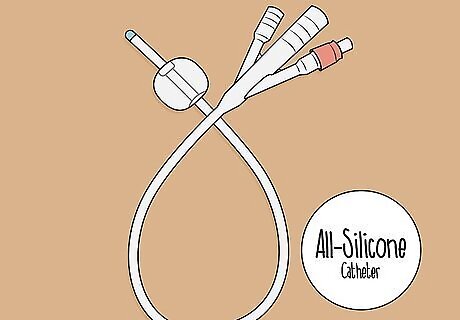
Ask about an all-silicone catheter if the tubing is blocked by debris. If your urine is often cloudy or has debris in it, this may be causing blockages in the tubing. For example, if you use a catheter that has tubing made from vinyl or red rubber latex, your doctor may recommend a catheter made from a more flexible material, such as an all-silicone catheter. This may help to reduce the chances of your catheter becoming blocked.Tip: Be sure to check with your insurance company to see what types of catheters they cover.
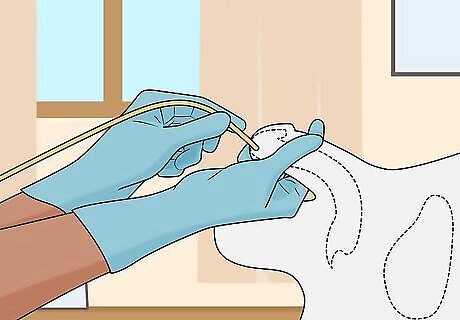
Get a new catheter inserted every 4 to 6 weeks or change it yourself. Your doctor will likely recommend replacing an indwelling catheter once every 4 to 6 weeks to prevent blockages. However, as long as it’s well cared for and you’re not having problems, you may be able to leave it in place for as long as 3 months before getting it changed. You can have your catheter changed at your doctor’s office or you can replace your catheter yourself if you have been taught how. If you have a suprapubic catheter, it is recommended to get it changed every 6 to 8 weeks. Always ask for help if you have concerns about changing your own catheter.
Preventing Blockages
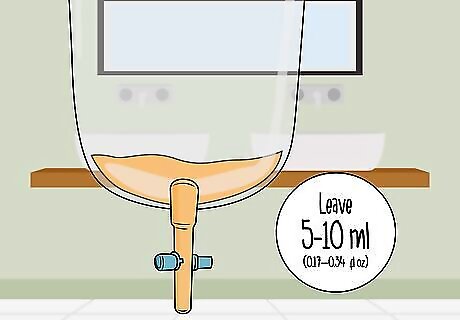
Leave 5–10 mL (0.17–0.34 fl oz) of urine in the bag to prevent a vacuum. Completely emptying the bag every time may cause the sides of the bag to stick together. This can create a vacuum, which will prevent urine from draining into the bag. To prevent this, always leave about 5–10 mL (0.17–0.34 fl oz) of urine in the drainage bag when you empty it. Make sure to note this if you are keeping track of your fluid intake and output.
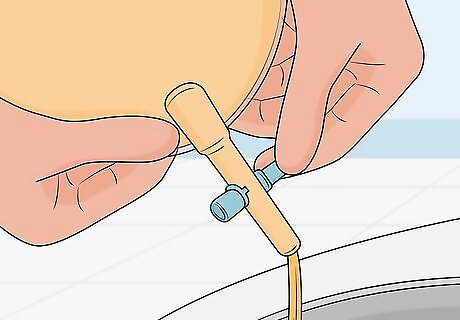
Empty the bag when it is 2/3 full to promote better urine flow. Try checking your bag once every 2 to 3 hours to see how full it is. If it’s 2/3 full or close to that level, empty it. Waiting until the bag is completely full can affect the flow of urine. The catheter will be more effective if you empty it when it is 2/3 full and do not allow it to fill up any more than this.
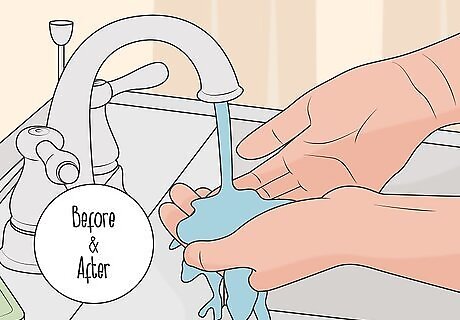
Wash your hands before and after handling the catheter equipment. Wet your hands with warm water and rub soap between them for 20 seconds. Then, rinse your hands thoroughly and pat them dry with a clean towel. Do this before and after handling any of your catheter equipment to help prevent infections. To time yourself for 20 seconds while you wash your hands, try humming the “happy birthday” song twice through. If you are unable to wash your hands with soap and water, use an alcohol-based hand sanitizer.
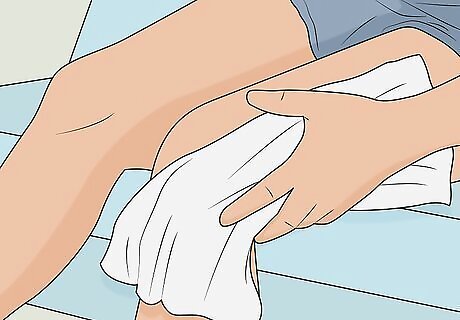
Wash the area around the catheter twice daily to maintain good hygiene. Take a shower or bath twice per day if possible to wash the area around your genitals. If you’re unable to bathe this often, use a wet washcloth with mild soap to clean the area around your catheter twice daily. Make sure to rinse the area thoroughly after cleansing it with soap.Tip: Use a baby wipe to clean the area if you are on the go and unable to clean yourself with soap and water.

Drink enough liquids each day so that your urine stays pale. Being dehydrated can result in low urine output, which may make it seem like your catheter is blocked even if it's not. Aim to drink water and other fluids throughout the day to keep yourself hydrated. Check the urine in the drainage bag to determine if it is a pale yellow. If it’s darker than pale yellow, then drink more fluids. Be sure to follow any guidelines that your doctor has given you regarding your fluid intake.

Follow a healthy, high-fiber diet to avoid constipation. Include lots of fruits, vegetables, and whole grains in your diet to ensure that you’re getting enough fiber. Aim for 25 grams of fiber each day if you’re a woman under 50 or 38 grams daily if you’re a man under 50. If you’re a woman over 50, aim for 21 grams per day, or 30 grams per day if you’re a man over 50. You could also include a fiber supplement to meet your daily fiber goal. Constipation is a common reason why some people’s catheters become blocked, so eating more fiber may help to prevent a blockage.

















Comments
0 comment